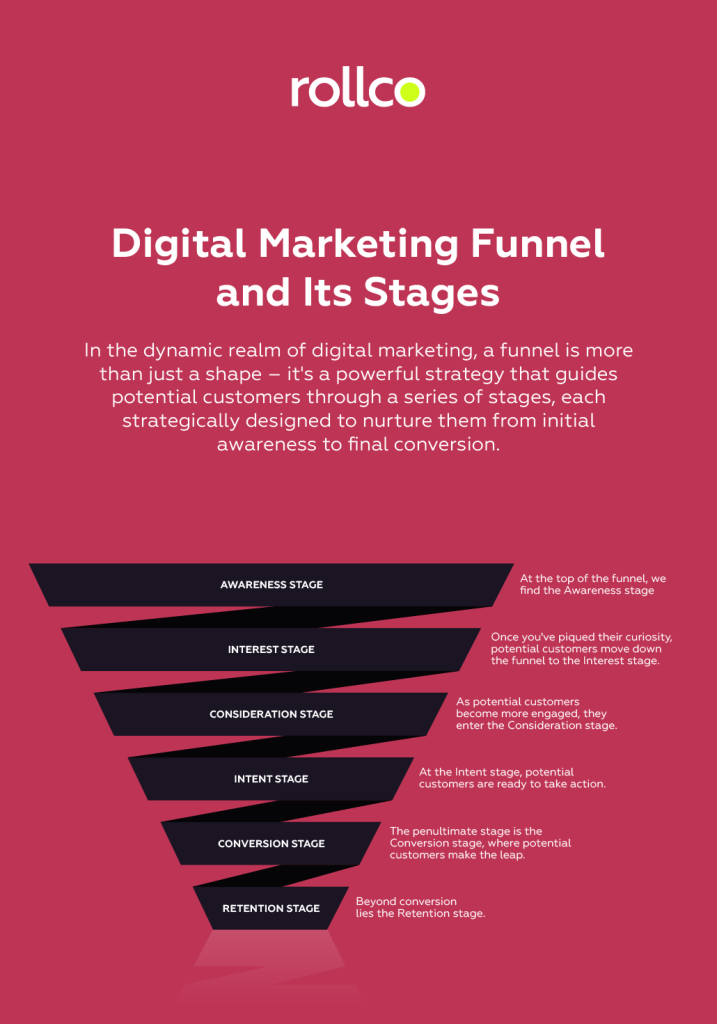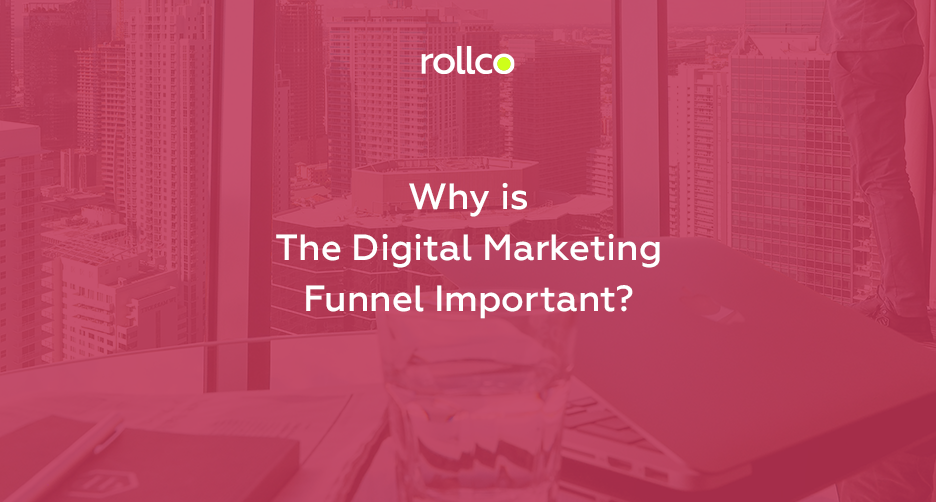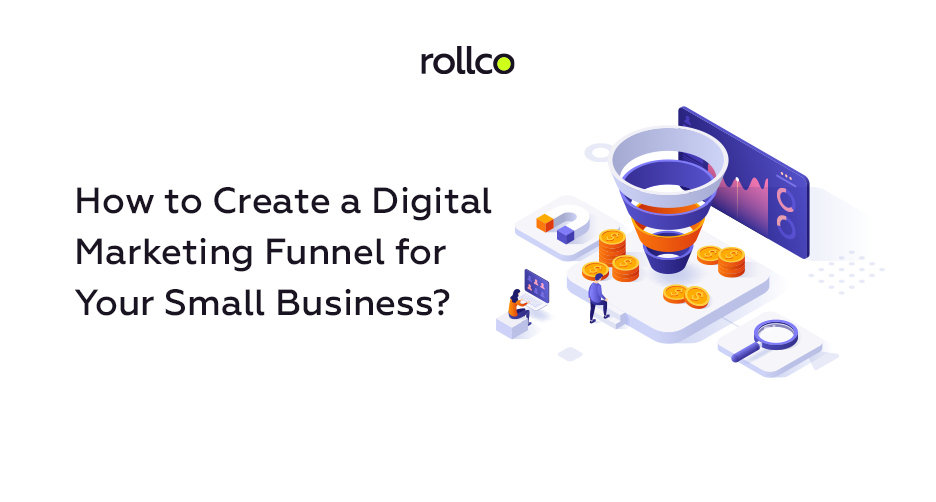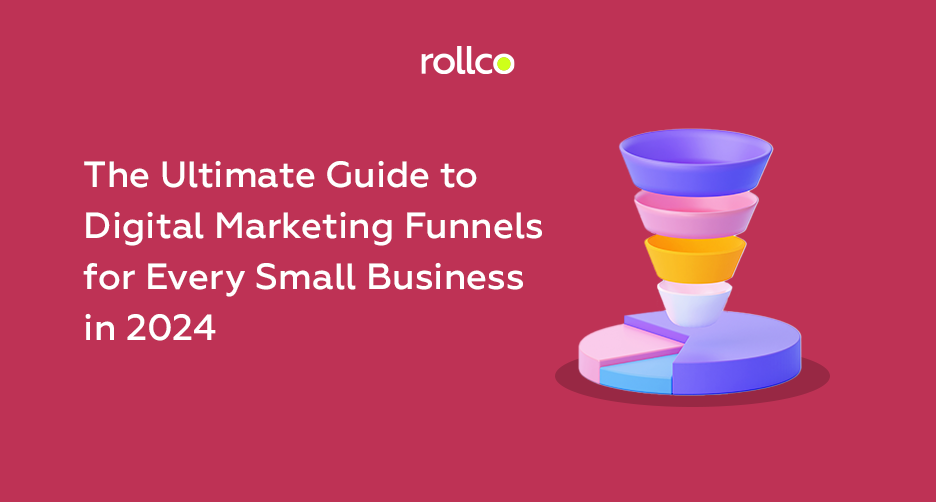In the rapidly evolving landscape of digital marketing, having a solid understanding of digital marketing funnels is essential for the success of every small business. A digital marketing funnel is a strategic approach that guides potential customers through a series of stages, from awareness to conversion, effectively nurturing them into loyal patrons. In this comprehensive guide, we will explore the key stages of a digital marketing funnel, delve into the essentials of full-funnel digital marketing, and provide you with actionable insights to craft a winning funnel marketing strategy tailored to the year 2024.
What Is a Digital Marketing Funnel and Its Stages?
 In the dynamic realm of digital marketing, a funnel is more than just a shape – it’s a powerful strategy that guides potential customers through a series of stages, each strategically designed to nurture them from initial awareness to final conversion. Think of it as a roadmap, leading your audience along a carefully orchestrated journey that ultimately culminates in a desired action, such as making a purchase, signing up for a service, or subscribing to a newsletter. The digital marketing funnel is a fundamental concept that empowers businesses to connect with their target audience, build relationships, and drive meaningful results. Let’s delve into the key stages of a digital marketing funnel to understand how this strategy works.
In the dynamic realm of digital marketing, a funnel is more than just a shape – it’s a powerful strategy that guides potential customers through a series of stages, each strategically designed to nurture them from initial awareness to final conversion. Think of it as a roadmap, leading your audience along a carefully orchestrated journey that ultimately culminates in a desired action, such as making a purchase, signing up for a service, or subscribing to a newsletter. The digital marketing funnel is a fundamental concept that empowers businesses to connect with their target audience, build relationships, and drive meaningful results. Let’s delve into the key stages of a digital marketing funnel to understand how this strategy works.
1. Awareness Stage:
At the top of the funnel, we find the Awareness stage. This is where the journey begins, as potential customers first become acquainted with your brand, product, or service. Through various channels such as social media, search engines, and content marketing, you capture their attention and introduce them to what you offer. Compelling blog posts, engaging videos, informative infographics, and attention-grabbing social media posts are just a few tactics that can help create brand visibility and ignite interest.
2. Interest Stage:
Once you’ve piqued their curiosity, potential customers move down the funnel to the Interest stage. Here, they actively seek more information about what you offer. Your task is to captivate their attention and provide value through in-depth content. This could include comprehensive blog articles, informative eBooks, insightful webinars, and engaging podcasts. By demonstrating your expertise and addressing their pain points, you build credibility and establish a foundation of trust.
3. Consideration Stage:
As potential customers become more engaged, they enter the Consideration stage. Now they’re evaluating their options and comparing your offerings against competitors. In this stage, you need to provide detailed insights that help them make informed decisions. Case studies, whitepapers, product comparison guides, and interactive demos can effectively showcase the unique benefits of your products or services. By offering valuable information and solutions, you position yourself as a valuable resource in their decision-making process.
4. Intent Stage:
At the Intent stage, potential customers are ready to take action. They’ve done their research, compared options, and are now actively seeking ways to make a purchase or sign up for your services. This is the time to present compelling offers that nudge them toward conversion. Limited-time promotions, discounts, free trials, and enticing call-to-action buttons play a crucial role in encouraging them to proceed to the next step.
5. Conversion Stage:
The penultimate stage is the Conversion stage, where potential customers make the leap and become paying customers. A seamless and user-friendly purchase process is essential at this point. Clear and concise checkout pages, simplified forms, secure payment gateways, and transparent pricing contribute to a frictionless conversion experience. This stage marks the fulfillment of their journey through the funnel, but the process doesn’t end here.
6. Retention Stage:
Beyond conversion lies the Retention stage. Satisfied customers are valuable assets, and nurturing their loyalty is key to sustaining your business. Engage with post-purchase follow-ups, personalized recommendations, loyalty programs, and exceptional customer support. By continuously delivering value and maintaining a positive relationship, you increase the likelihood of repeat business, referrals, and long-term customer loyalty. In essence, a digital marketing funnel is a strategic masterpiece that guides potential customers through a sequence of purposeful stages. Each stage serves as a stepping stone, leading them from initial awareness to loyal advocacy. By understanding and optimizing each stage of the funnel, businesses can create a cohesive and effective marketing strategy that maximizes engagement, conversions, and long-term success.
Full-Funnel Digital Marketing Essentials
To effectively implement a full-funnel digital marketing strategy in 2024, consider the following essentials: Data-Driven Insights: Utilize analytics tools to gather data at each funnel stage. Analyze customer behavior, preferences, and pain points to optimize your strategy. Personalized Content: Tailor your content to match the needs of your audience at each stage. Implement marketing automation to deliver the right content to the right people. Multi-Channel Approach: Reach your audience across various platforms such as social media, email marketing, search engines, and display advertising. Consistency in messaging is key. Mobile Optimization: As mobile usage continues to rise, ensure your funnel is optimized for mobile devices to provide a seamless experience. A/B Testing: Experiment with strategies, content formats, and calls to action. A/B testing helps refine your approach and improve conversion rates. Lead Nurturing: Implement drip campaigns and follow-up sequences to nurture leads that still need to be ready to convert. Building trust takes time, and consistent communication is vital.
Why is the Digital Marketing Funnel Important?
 The digital marketing funnel is a crucial framework for businesses seeking to maximize their online presence and convert potential customers into loyal advocates. It plays a pivotal role in guiding a user’s journey from initial awareness to final purchase, allowing marketers to strategically engage and nurture leads at every stage. By breaking down the consumer decision-making process into distinct phases—awareness, consideration, conversion, and retention—the funnel offers valuable insights into user behavior and preferences. This understanding empowers marketers to tailor their strategies, content, and communication efforts, optimizing the overall customer experience. As a result, the digital marketing funnel facilitates the alignment of marketing efforts with business objectives, enhances lead generation, and ultimately drives higher conversion rates and long-term customer loyalty in the dynamic landscape of the digital age.
The digital marketing funnel is a crucial framework for businesses seeking to maximize their online presence and convert potential customers into loyal advocates. It plays a pivotal role in guiding a user’s journey from initial awareness to final purchase, allowing marketers to strategically engage and nurture leads at every stage. By breaking down the consumer decision-making process into distinct phases—awareness, consideration, conversion, and retention—the funnel offers valuable insights into user behavior and preferences. This understanding empowers marketers to tailor their strategies, content, and communication efforts, optimizing the overall customer experience. As a result, the digital marketing funnel facilitates the alignment of marketing efforts with business objectives, enhances lead generation, and ultimately drives higher conversion rates and long-term customer loyalty in the dynamic landscape of the digital age.
How to Create a Digital Marketing Funnel for Your Small Business in 2024?
 In the fast-paced digital landscape of 2024, creating an effective digital marketing funnel for your small business is crucial for attracting, engaging, and converting potential customers. A well-designed funnel can guide your audience seamlessly from their initial interaction with your brand to becoming loyal customers. Here’s a step-by-step guide to help you create a powerful digital marketing funnel tailored to the needs of your small business:
In the fast-paced digital landscape of 2024, creating an effective digital marketing funnel for your small business is crucial for attracting, engaging, and converting potential customers. A well-designed funnel can guide your audience seamlessly from their initial interaction with your brand to becoming loyal customers. Here’s a step-by-step guide to help you create a powerful digital marketing funnel tailored to the needs of your small business:
1. Define Your Goals:
Begin by setting clear and specific goals for your digital marketing funnel. Identify what you want to achieve at each stage, whether it’s increasing brand awareness, generating leads, boosting sales, or improving customer retention. Having well-defined goals will guide your strategy and help you measure success.
2. Understand Your Audience:
Develop a deep understanding of your target audience. Conduct market research to identify their demographics, preferences, pain points, and online behavior. This information will enable you to tailor your funnel to resonate with their needs and interests.
3. Segment Your Audience:
Divide your audience into segments based on shared characteristics. This segmentation allows you to create personalized and targeted marketing campaigns for different groups, increasing the relevance of your messages and improving conversion rates.
4. Create Engaging Content:
Develop high-quality, engaging, and relevant content for each stage of the funnel. Craft blog posts, videos, infographics, and social media content that educates, entertains, and solves problems for your audience. The content should align with the interests of each segment and guide them along their journey.
5. Build Landing Pages:
Create dedicated landing pages for each stage of the funnel. These pages should be optimized for conversion, with clear and compelling calls-to-action (CTAs), relevant content, and user-friendly forms. Landing pages play a critical role in capturing leads and driving conversions.
6. Implement Lead Magnets:
Offer valuable lead magnets, such as eBooks, whitepapers, webinars, or exclusive discounts, in exchange for your audience’s contact information. These incentives encourage potential customers to engage with your brand and enter your funnel.
7. Utilize Email Marketing:
Set up automated email sequences to nurture leads and guide them through the funnel. Craft personalized and relevant emails that provide value, address pain points, and offer solutions. Use segmentation to send targeted messages to specific audience segments.
8. Integrate Social Media:
Engage with your audience on social media platforms by sharing your content, running targeted ads, and participating in conversations. Social media plays a vital role in building brand awareness and driving traffic to your funnel.
9. Implement Retargeting:
Use retargeting ads to re-engage website visitors who didn’t complete a desired action. These ads remind them of your offerings and encourage them to return to your funnel.
10. Monitor and Optimize:
Regularly analyze the performance of your funnel using analytics tools. Track key metrics such as conversion rates, click-through rates, and bounce rates. Use the insights gained to optimize your funnel by making data-driven adjustments to improve its effectiveness.
11. Test and Iterate:
Continuously test different elements of your funnel, such as CTAs, headlines, and imagery, to identify what resonates best with your audience. A/B testing allows you to refine your strategy and increase conversion rates over time.
12. Provide Exceptional Customer Support:
Ensure that your customer support is top-notch, both during and after the conversion process. Positive customer experiences can lead to repeat business and referrals, contributing to the long-term success of your funnel. Creating a digital marketing funnel for your small business requires a combination of strategic planning, audience understanding, compelling content, and continuous optimization. By following these steps and adapting your approach based on data and insights, you can build a robust funnel that drives growth, engagement, and conversions for your small business.
Conclusion
As digital marketing evolves in 2024, understanding and implementing effective digital marketing funnels is a cornerstone for small business success. By comprehending the stages, embracing full-funnel strategies, and crafting a tailored funnel marketing approach, you can drive brand awareness, engage potential customers, and achieve higher conversion rates. Stay agile, stay data-driven, and reap the rewards of a well-optimized digital marketing funnel that guides your audience seamlessly from discovery to conversion and beyond.

